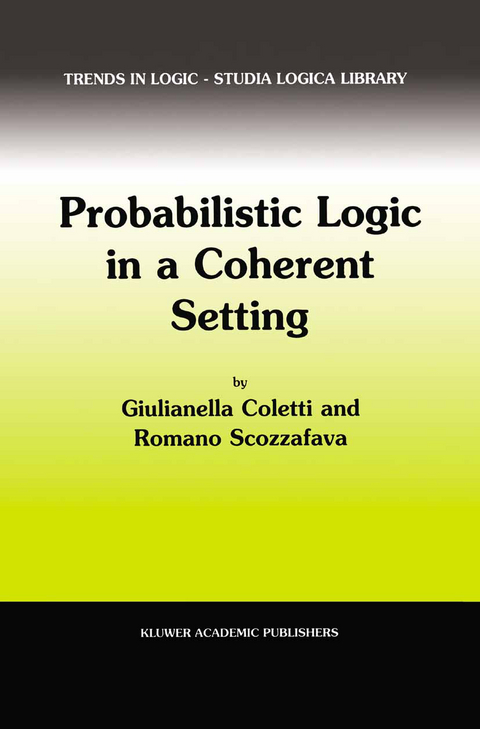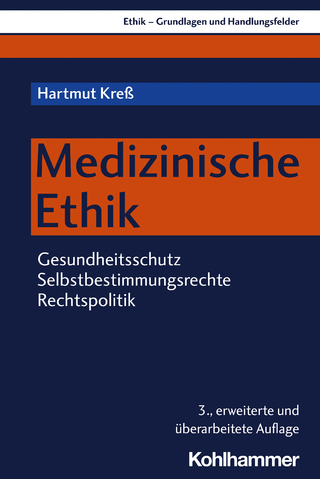
Probabilistic Logic in a Coherent Setting
Springer-Verlag New York Inc.
978-1-4020-0917-4 (ISBN)
The book is kept self-contained, provided the reader is familiar with the elementary aspects of propositional calculus, linear algebra, and analysis.
1 Introduction.- 1.1 Aims and motivation.- 1.2 A brief historical perspective.- 2 Events as Propositions.- 2.1 Basic concepts.- 2.2 From “belief” to logic?.- 2.3 Operations.- 2.4 Atoms (or “possible worlds”).- 2.5 Toward probability.- 3 Finitely Additive Probability.- 3.1 Axioms.- 3.2 Sets (of events) without structure.- 3.3 Null probabilities.- 4 Coherent probability.- 4.1 Coherence.- 4.2 Null probabilities (again).- 5 Betting Interpretation of Coherence.- 6 Coherent Extensions of Probability Assessments.- 6.1 de Finetti's fundamental theorem.- 6.2 Probabilistic logic and inference.- 7 Random Quantities.- 8 Probability Meaning and Assessment: a Reconciliation.- 8.1 The “subjective” view.- 8.2 Methods of evaluation.- 9 To Be or not To Be Compositional?.- 10 Conditional Events.- 10.1 Truth values.- 10.2 Operations.- 10.3 Toward conditional probability.- 11 Coherent Conditional Probability.- 11.1 Axioms.- 11.2 Assumed or acquired conditioning?.- 11.3 Coherence.- 11.4 Characterization of a coherent conditional probability.- 11.5 Related results.- 11.6 The role of probabilities 0 and 1.- 12 Zero-Layers.- 12.1 Zero-layers induced by a coherent conditional probability.- 12.2 Spohn's ranking function.- 12.3 Discussion.- 13 Coherent Extensions of Conditional Probability.- 14 Exploiting Zero Probabilities.- 14.1 The algorithm.- 14.2 Locally strong coherence.- 15 Lower and Upper Conditional Probabilities.- 15.1 Coherence intervals.- 15.2 Lower conditional probability.- 15.3 Dempster's theory.- 16 Inference.- 16.1 The general problem.- 16.2 The procedure at work.- 16.3 Discussion.- 16.4 Updating probabilities 0 and 1.- 17 Stochastic Independence in a Coherent Setting.- 17.1 “Precise” probabilities.- 17.2 “Imprecise” probabilities.- 17.3 Discussion.- 17.4Concluding remarks.- 18 A Random Walk in the Midst of Paradigmatic Examples.- 18.1 Finite additivity.- 18.2 Stochastic independence.- 18.3 A not coherent “Radon-Nikodym” conditional probability.- 18.4 A changing “world”.- 18.5 Frequency vs. probability.- 18.6 Acquired or assumed (again).- 18.7 Choosing the conditioning event.- 18.8 Simpson’s paradox.- 18.9 Belief functions.- 19 Fuzzy Sets and Possibility as Coherent Conditional Probabilities.- 19.1 Fuzzy sets: main definitions.- 19.2 Fuzziness and uncertainty.- 19.3 Fuzzy subsets and coherent conditional probability.- 19.4 Possibility functions and coherent conditional probability.- 19.5 Concluding remarks.- 20 Coherent Conditional Probability and Default Reasoning.- 20.1 Default logic through conditional probability equal to 1.- 20.2 Inferential rules.- 20.3 Discussion.- 21 A Short Account of Decomposable Measures of Uncertainty.- 21.1 Operations with conditional events.- 21.2 Decomposable measures.- 21.3 Weakly decomposable measures.- 21.4 Concluding remarks.
| Reihe/Serie | Trends in Logic ; 15 |
|---|---|
| Zusatzinfo | IV, 291 p. |
| Verlagsort | New York, NY |
| Sprache | englisch |
| Maße | 155 x 235 mm |
| Themenwelt | Geisteswissenschaften ► Philosophie ► Allgemeines / Lexika |
| Geisteswissenschaften ► Philosophie ► Logik | |
| Mathematik / Informatik ► Informatik ► Theorie / Studium | |
| Mathematik / Informatik ► Mathematik ► Logik / Mengenlehre | |
| ISBN-10 | 1-4020-0917-8 / 1402009178 |
| ISBN-13 | 978-1-4020-0917-4 / 9781402009174 |
| Zustand | Neuware |
| Haben Sie eine Frage zum Produkt? |
aus dem Bereich


